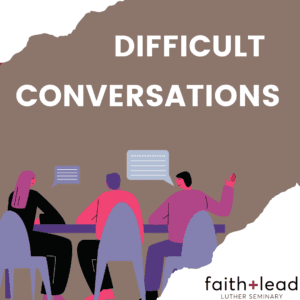The Old Testament is a book shaped by disasters, tragedies, and collapses. No wonder some have referred to it as “survival literature” (Thomas Thompson). For most of its history, ancient Israel led a precarious existence. Stability–when it was achieved–was fragile at best. The chosen people of Israel’s collective fate was often deeply dependent upon forces outside of its immediate control: natural disasters, warfare, imperialism, economic hardship, incompetent and unjust rulers, etc. Even Israel’s most prominent promise-bearing institutions (the royal house of David, the temple and priesthood, tribes) were vulnerable to forces of change and upheaval.
Ancient Israel’s prophets often played an important role in these moments of breakdown, disintegration, and collapse. As divine messengers, they announced impending disasters, interpreted those disasters in light of God’s commands and promises, and in some cases tried to persuade their audiences to change course and avoid the gathering storm.
A time of collapse
Those of us within the mainline Protestant denominations are also living through a period of collapse. We are experiencing the slow-burning, gradual disintegration of vast theological institutions that many of us both cherish and critique. This was taking place long before the pandemic, which has surely accelerated it. For the Evangelical Lutheran Church in America, the trends point ominously toward demise within the next few decades (see “Will the ELCA Be Gone in 30 Years?”).
Mainline institutions are not alone in this experience, though it is particularly acute for the Euro-tribal churches. Many other Christian denominations are in various stages of upheaval, and have been for a long time. This is in part due to a much larger cultural shift from the Age of Association to the Age of Authenticity that is affecting all kinds of voluntary associations like service organizations, clubs, scouting, and unions, in addition to the church.
This is a time of judgment for institutions. If in previous eras the shortcomings, contradictions, and failures of institutions were downplayed, denied, or just accepted as a normal part of life in an imperfect world, people today are quick to judge. There is a social and cultural reckoning taking place that many would agree is long overdue. Hard truths are being told, and previously ignorable facts are being exposed. Public trust is eroding not just in “the church” or “organized religion” but in a wide range of institutions including the medical system, Congress, organized labor, the American Presidency, the media, corporations, and the Supreme Court (Gallup).
But if we do in fact live in a time of institutional collapse, then church leaders are faced with a number of weighty vocational questions: How are we called to lead faithfully in this season? What are our responsibilities when the institutional walls and cornerstones around us are slowly buckling under the weight of forces that can no longer be avoided, resisted, or circumnavigated?
Those are important questions, but they aren’t new ones. The prophet Jeremiah faced similar issues when he began to perceive that Judah was on course for a dismal future of defeat and desolation. Drawing on the book of Jeremiah, here are some things leaders can do to lead faithfully in a season of collapse.
Call a thing what it is
Max De Pree said, “The first responsibility of a leader is to define reality.” Martin Luther put it this way in his Heidelberg Disputation: “A theologian of the cross calls a thing what it actually is.” Defining reality was a serious challenge for Jeremiah too, especially in the period of time leading up to Jerusalem’s destruction at the hand of Babylonian armies. Arguably, Jeremiah’s greatest obstacle was collective denial (Jeremiah 6:10).
In his famous temple sermon in Jeremiah 7, we learn that there were many who denied that crisis and calamity could ever trouble Jerusalem’s sacred walls. Clinging to the belief that God would never allow the Holy City to fall (see, for example, Psalms 46, 48), they resisted Jeremiah, firm in their belief that they could brutalize their neighbors and then remain safe in God’s presence (Jeremiah 7:10). They say “‘Peace, peace,’ when there is no peace” (Jeremiah 6:14). The problem was not that Jeremiah’s opponents lacked faith. It’s that their faith was rooted in false, fragile, and empty promises.
Leaders today must be clear-eyed and transparent about the nature of the challenges facing the church. There is no quick fix for what ails the institutional church; the social and cultural forces undermining it are too big and too far out of our hands. Most people in most congregations (understandably) want their church to be fixed and returned to “the way it always has been.” This isn’t possible. Leaders need to learn how to help people lament the loss associated with the reality that we can’t get back to the way things were and help them move forward. This involves disappointing the expectations of many in a congregation, but at a rate people can stand (Heifetz and Linsky).
Jeremiah and the biblical prophets were vividly clear about the realities of demise and collapse, but within a larger frame of reality that identifies God’s presence and promises. In the book of Jeremiah, God is simultaneously outside of Jerusalem’s walls, smoldering over the mistreatment of the vulnerable and the scornful disregard of worship, and within the city walls planting the seeds of hope in anticipation of a new day. Identifying how both death and life are at work in our midst is at the core of our leadership work today.
Don’t be distracted
Jeremiah was also concerned about whether his community’s practices were truly life-giving. If Jeremiah had an elevator speech, it would probably sound something like this poem:
Be appalled, O heavens, at this,
be shocked, be utterly desolate,
says the Lord,
for my people have committed two evils:
they have forsaken me,
the fountain of living water,
and dug out cisterns for themselves,
cracked cisterns
that can hold no water (Jeremiah 2:12-13).
Given their desert environs, Jeremiah’s audience knew about the importance of water–for their bodies, their crops, and their animals. Cracked cisterns weren’t just an inconvenience, like a leaky faucet. They were a matter of life and death. As Christian leaders, we must also ask whether our practices “hold water.” Do they give life? Do they offer Christ?
So much energy is currently being spent within many churches on things that won’t last and don’t actually help people cultivate deeper Christian faith and discipleship. The voluntary association model of congregation brought with it all kinds of social and cultural activities embodied in committees and programs. Many are not primarily designed to form Christian faith. Almost every congregational leader we talk to is tired–tired of trying to sustain all this activity, to secure resources, volunteers, energy, and participation in a model that is in most places irretrievable.
One of the exercises we sometimes do with students and pastors we teach, coach, or consult is to ask them to describe an activity in their church and then reflect on how much Christian faith would be formed in someone who participated faithfully in that activity for six months or a year. Do this for all the activities in your church and see what you come up with. Much of this activity is simply distracting from the core work of cultivating Christian faith, identity, and discipleship in contemporary culture. That work is embodied in concrete, accessible, Christian practices–often ancient ones centered on scripture–that connect people with God and help them follow God’s leading in daily life. These are part of the precious heritage of the church and must be retrieved–even when the altar guilds and rummage sales go away.
Identify the remnant
When the late Terry Fretheim taught the book of Jeremiah, he would often describe the prophet’s ministry in terms of a canoe racing down a river toward a waterfall. Jeremiah’s job was to warn his fellow passengers about the danger ahead in hopes of avoiding a potential disaster. God’s faithfulness was expressed in Jeremiah’s pleading for a course correction. But there came a time in his ministry when a course correction was no longer possible–the people of God were going to take a terrifying dive down the cliff. Even as the canoe plunged to its destruction, Jeremiah reminded his people that God would help them pick up the pieces on the other end and forge a new future in exile and beyond. Jerusalem may have collapsed but God’s faithfulness would endure. And one of the flesh and blood signs of that faithfulness was a remnant that would bear God’s promises into the future.
In the wake of the exile, God promised to return a remnant to their homeland, where the age-old project of growing and sustaining a covenant people would ensue.
Woe to the shepherds who destroy and scatter the sheep of my pasture! says the Lord. Therefore thus says the Lord, the God of Israel, concerning the shepherds who shepherd my people: It is you who have scattered my flock, and have driven them away, and you have not attended to them. So I will attend to you for your evil doings, says the Lord. Then I myself will gather the remnant of my flock out of all the lands where I have driven them, and I will bring them back to their fold, and they shall be fruitful and multiply. I will raise up shepherds over them who will shepherd them, and they shall not fear any longer, or be dismayed, nor shall any be missing, says the Lord (Jeremiah 23:1-4).
Jeremiah’s words are doubled-edged, offering up both judgment and promise. On the one hand, he announces God’s opposition to practices that scatter the flock, leaving them vulnerable to predation and other dangers. On the other hand, God also promises to gather a remnant who will “be fruitful and multiply.” This “remnant” represents an abundant future in which fear has been vanquished and none are missing from the fold.
What work does the church do in people’s lives? Many congregations have significant numbers of members who are functionally there for primarily social and cultural reasons. They find meaning and belonging in those committees, programs, and activities. Participating in and supporting the institutional church is what discipleship looks like to them. However, they often struggle to identify God’s movement in their daily lives, talk about God, pray or read the Bible on their own, and share their faith with their neighbors. The way they express their faith isn’t readily transferable to others–including their own children and grandchildren.
While this may even be a large majority in some churches, there is also typically a smaller number of people oriented around a more intentional journey of spiritual growth and discipleship in daily life. These may be old-timers or newcomers, core leaders or people on the margins. They remain connected to their congregations but hunger for more. These are the people who would continue to meet for Bible study in homes if they lost their church building, who have discovered the ability to talk about faith in daily life with their neighbors, whose spirits are open to the Holy Spirit. They constitute something of a remnant.
As many congregations consider closing in the coming years, this remnant will carry on the faith, albeit in very different institutional forms. They will be the pioneer leaders of fresh expressions of Christian community in their neighborhoods, the facilitators of house churches and micro-communities, the seed corn from which new forms of church will sprout. Present congregational leaders should identify and prioritize nourishing these disciples in their walk of faith.
Lean on God
Living through a collapse is terrifying, and leading others through it is doubly so. When Jeremiah received his calling, he was invited to take a journey of trust. He accepted that calling, albeit with some reluctance:
Then I said, “Ah, Lord God! Truly I do not know how to speak, for I am only a boy.” But the Lord said to me,
“Do not say, ‘I am only a boy’;
for you shall go to all to whom I send you,
and you shall speak whatever I command you.
Do not be afraid of them,
for I am with you to deliver you,
says the Lord.”
For each of Jeremiah’s concerns or fears, God offers him a promise to cling to in the thick of hardship and opposition.
We live in a “secular age” (Charles Taylor) in which many people struggle to identify God’s presence and leading in their lives and in the church. The default cultural assumption is that one can live a good life without God. As the institutional structures (and the security they seemed to offer) are stripped away, we must learn how to trust in God alone. This is one of the hardest biblical lessons for God’s people. Practices that help people experience the power and presence of the living God are essential to the work of Christian leadership in this time. We are not alone, no matter what may befall us and how much loss it entails.
Cultivate seeds of hope
Jeremiah demonstrates his trust in God’s faithful promises in Chapter 32, where he does a very strange thing: he buys a field (through right of redemption) from his cousin Hanamel (32:1-44). All of this takes place as the Babylonians are laying siege to Jerusalem in 588 BCE and while Jeremiah was in prison for issuing unpopular prophetic messages. While this hardly seems like an auspicious time for a real estate deal (!), we quickly discover that Jeremiah’s actions are symbolic in nature. After signing the documents, Jeremiah says the following to his scribe Baruch:
“Take these deeds, both this sealed deed of purchase and this open deed, and put them in an earthenware jar, in order that they may last for a long time. For thus says the Lord of hosts, the God of Israel: Houses and fields and vineyards shall again be bought in this land” (32:14-15).
God’s words of judgment against Judah were not the end of the story. After the land had been charred with fire, a new day would come when the land could again support human flourishing. From the very beginning, Jeremiah’s ministry has always been one of both uprooting and planting (1:10).
At the very height of a personal and social crisis, God called Jeremiah to engage in an act of hope (32:25). God was simultaneously at work in the collapse of Jerusalem and its future restoration, when God’s people would receive a new future:
“It [Jerusalem] is being given into the hand of the king of Babylon by the sword, by famine, and by pestilence”: See, I am going to gather them from all the lands to which I drove them in my anger and my wrath and in great indignation; I will bring them back to this place, and I will settle them in safety. “They shall be my people, and I will be their God. I will give them one heart and one way, that they may fear me for all time, for their own good and the good of their children after them” (32:36-39).
Even in death God was bringing about new life, and the same is true for us. The collapse of so many Christian institutions does not signal the end of Christ’s gospel ministry in the world or our calling to make disciples. We may be at the end of a chapter, but we are nowhere near the end of the book. We must till the soil looking for seeds of new life from God, even if they look very different from what we have known. For leaders, this means cultivating an environment of experimentation that helps people root themselves in God’s presence and promises.
The questions before us are as follows:
- Where do we see emerging signs of life breaking through the scorched soil, and how can we attend to them with prayer, support, and resources?
- Where is the liberating work of the gospel already happening in our midst?
- And how can we, as leaders, nourish that work and ensure that it is sustainable?
References:
- The term “survival literature” was first used in Thomas Thompson’s controversial book, The Mythic Past: Biblical Archaeology and the Myth of Israel. New York: Basic Books, 1999.
- Lack of credibility is a key symptom of institutional collapse. Over decades, Gallup has tracked public confidence in numerous public institutions: https://news.gallup.com/poll/1597/confidence-institutions.aspx
- Max DePree, Leadership is an Art (New York: Dell, 1989), 11.
- Ronald Heifetz and Marty Linsky, Leadership on the Line (Boston: Harvard Business School Press, 2002), 20.





